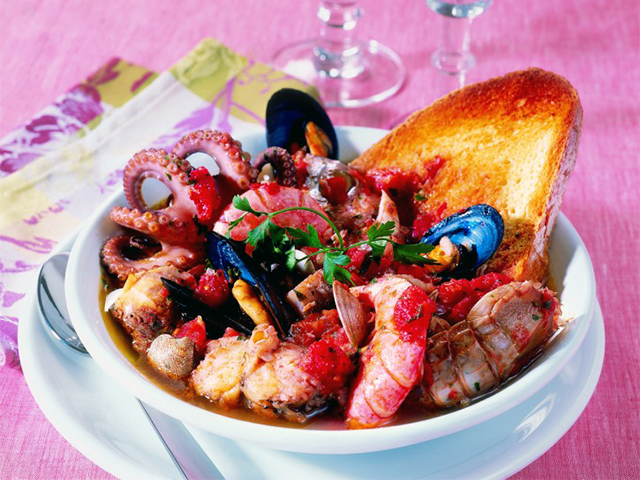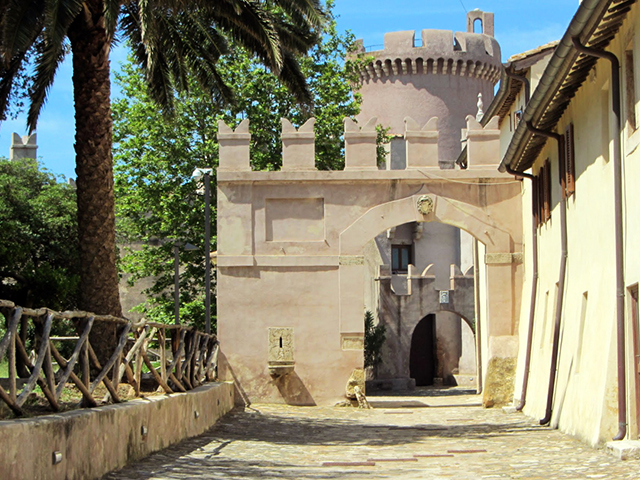Spain on the road: a trip by motorbike or by car
Barcelona, round trip: an adventurous itinerary embarking your motorbike or car from the Port of Civitavecchia.How many times have you and your friends dreamt of devouring kilometers of scorching tarmac, with the sun burning your face and the wind ruffling your hair?
How many times have you planned a trip on the road, riding your motorbike or driving your car, leaving all behind to live a holiday in absolute freedom?
The moment is now! You don't even need to go to the States, you just have to take a ferry from the Port of Civitavecchia, embark your car and reah the coast of Barcelona, Spain. We'll take care of the rest!
Discover the itinerary that will make you live an unforgettable adventure among art cities, beaches, sea and so much entertainment! 10 stops to visit and discover Spain under a new light... yours!
SPAIN ON THE ROAD: THE ROUTE
The Port of Civitavecchia is connected almost daily to Barcelona thanks to ferry boats. You can embark on them your vehicle and live the road trip of your dreams.
Here are the 10 stops we have selected for you!

Spain on the Road: the stops of the route leaving from the Port of Civitavecchia
CLICK HERE TO DOWNLOAD THE MAP
To complete this route on the road you will need at least 10 days. At every stop you will continuously discover monuments, museums, beaches and unmissable place to visit. If you have more days, much better!
There are so many things to see along the route, we will provide you with suggestions about the top destinations, but obviously feel free to improvise!
1. BARCELONA
Barcelona certainly needs no introduction!
Art, sea and fine cuisine are only some of the ingredients that make this city one of the most beautiful and most demanded cities in Europe. Point of departure and arrival for our trip, the capital of Catalonia is the second largest Spanish city after Madrid.
Since there are a lot of things to see and do in Barcelona, our tip is to spend at least two days in the city. Sagrada Familia, Park Güell, Casa Batlló, Casa Milà, La Rambla, the Gothic Quarter with its splendid churches, the Montjuïc mountain and the Castle and much more, are only some of the main attractions.
Everything surrounded by the beautiful beach of La Barceloneta, excellent cuisine and many clubs to party all night until dawn. In addition, visiting the city riding your motorbike will be a unique experience!
Before you leave, read also our article 10 Things to See in Barcelona and there you go!
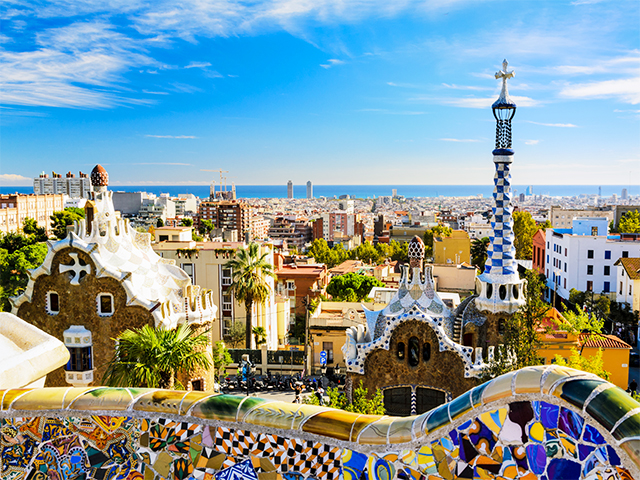
Views over Barcelona from Park Güell
2. TARRAGONA
Tarragona is a lively sea town 100 km away from Barcelona. To get there it will take you about 1 hour. Along the road, shortly before arriving to the city, stop to visit the ruins of ancient Roman Aqueduct Pont del Diable, UNESCO's World Heritage Site.
The historic identity of Tarragona is owed to the Roman and Medieval traces that still todays give proof of two ages of great splendour for the city, thanks to the presence of monuments of remarkable relevance.
Among them, the characteristic Cathedral, with its collection of tapestries and Gothic paintings or the great Roman Amphitheatre, able to host up to 13 thousand spectators!
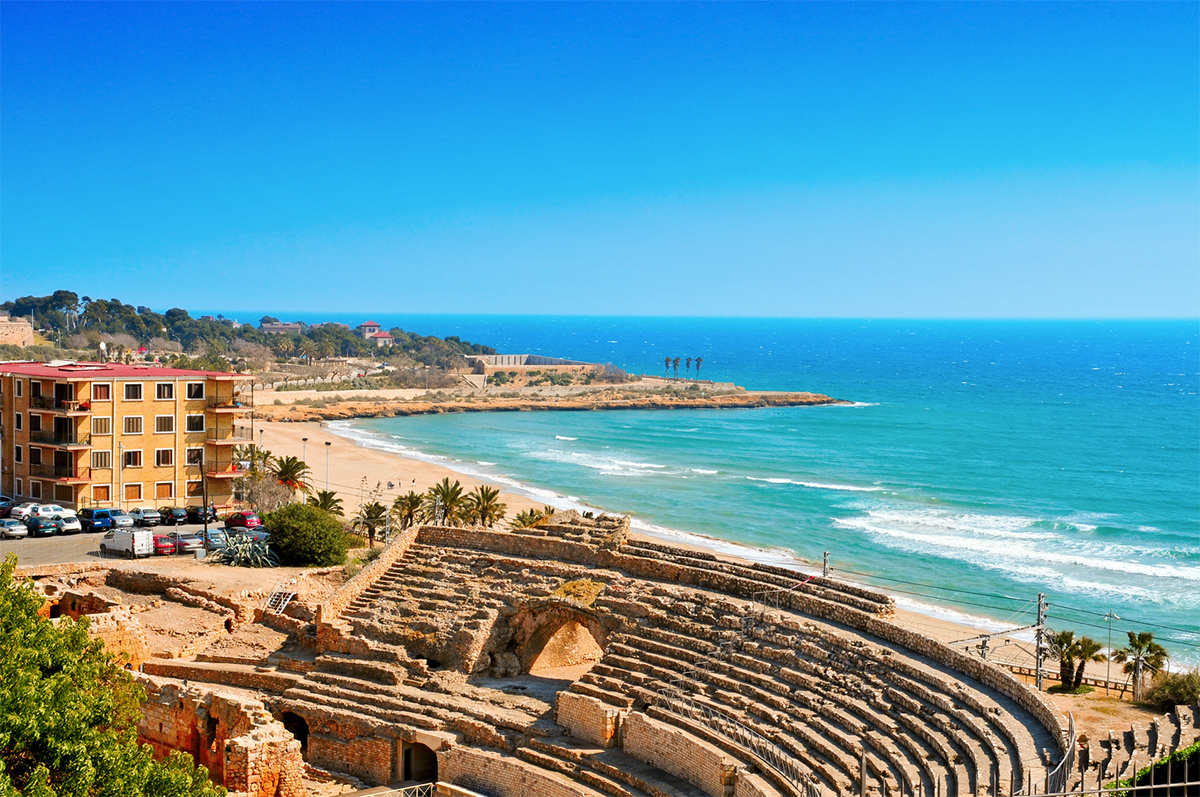
Tarragona
On the basis of the amphitheater are a Visigoth Basilica dating back to the 6th century and a 12th-century Catholic church. Also the Romans ruins in Avinguda Catalunya, or the National Archeological Museum, in addition to beautiful beaches washed by clear water.
Finally, if you are looking for some entertainment in the surroundings of Tarragona you are really spoilt for choise. From Universal Mediterranea, the Universal Studios theme park, to the Aqualeon, a sort of water safari, as well as the water park Aquopolis.
3. VALENCIA
To get to Valencia, the next stop of your road trip, you can either drive along highway A7, or take N340, which goes through Costa del Azahar and goes by towns like Vinaroz, Benicarló, Peñíscola, Alcalà de Xivert, Oropesa del Mar, Torreblanca, Benicassim and Castellón de la Plana.
Valencia is the third largest Spanish city and it is characterised by warm temperatures and a lively nightlife. The city center and the old neighborhood of El Carmen are on the right bank of the River Turia. Here, once you arrive, you can easily get around with the subway, parking your motorbike in any of the many secured parking spaces.
There are really so many things to do and see in Valencia: the Cahtedral with the hight tower of Miguelete, from where you can enjoy nice views over the city; the modern City of Arts and Sciences designed by architect Calatrava, it houses attractions like the Oceanografic, the Umbracle, the Palace of the Arts, the Museum of Science and the Hemisfèric; and the Neighbourhood of El Carmen with a lively nighlife.
Only here you will be able to taste the original paella valenciana besides other specialites like Horchata (tiger nut milk) and Agua de Valencia (a cocktail made with cava, orange juice, vodka, and gin).

City of Arts and Sciences in Valencia
4. GRANADA
To get to Granada, in the heart of Andalusia, this time you will drive for 500 km, that's why we hughly recommend to break the trip into two stops. Along the coast, you can stop by Alicante or Cartagena, otherwise, inland, there's Murcia a valid alternative.
If you wish to enjoy a really unique experience our tip is to go along the coast and reach Almeria. Here, along the road that leads to Granada is the Tabernas Desert, the only real desert in Europe where you can relive the atmosphere of the films by Sergio Leone. In this European Far West, in fact, have been filmed masterpieces like A Fistfull of Dollars and many other spaghetti western films.
In this Mini Hollywood you can find most everything! From a saloon to the Sheriff office with the jail and the bank closeby, from the Barber's shop to the square where to challenge someone to a duel.

Tabernas Desert
Granada is a city rich of history and culture, halfway between the mountain of Sierra Nevada and Costa Tropical, looking out onto Africa. Walking amidst its streets you will bump into the Alhambra, fortress constructed by Moorish kings over the ruins of the old citadel of the Alcazaba, or the Albayzín, old district where the Moors settled after the Reconquista.
Granada is a wonderful city that will ramain in your heart. As an old Spanish proverb says: "if you haven't seen Granada, you have seen nothing".
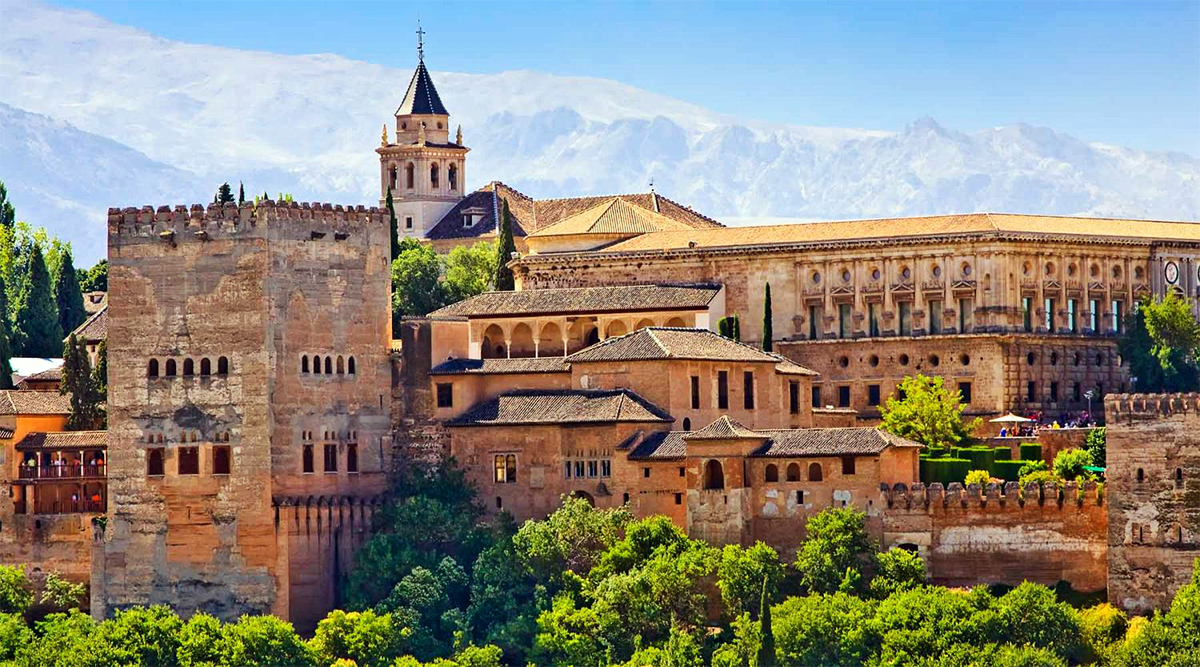
Granada - Alcazaba
Among the wonders of Granada, visit also the Generalife, a palace surrounded by gorgeous hills and splendid gardens or the Parque de las Ciencias de Granada where you will be able to learn the history of science in an easy and fun way. Finally, don't miss the Granada Cathedral, considered the greatest expression of Renaissance church in Spain.
Before you leave again, remember to taste the special typical dishes of Granada traditional cuisine, with a blend of Arabic and Spanish flavours.
5. SEVILLE
Granada and Seville are 250 kilometers away from each other. To get there you can drive along the A92 in approximately 2 hours and 40 minutes.
Once you arrive, you will be overwhelmed by the vitality of this charming city, pure essence of Spain! The Capital of Andalusia is flamenco, tapas, corrida and parties all night long.
The artistic heritage of Seville is proud of a Medieval historic center, which grows around the quiet Guadalquivir river.
Among the unmissable attractions of the city are the Cathedral, the Giralda and the Alcazar, the picturesque Barrio de Santa Cruz, typical Andalusian neighbourhood, Plaza de España with its wideness and its decoration with ceramic tiles and fountains, the Torre del Oro and the Barroque church of Macarena.
Jump on the Panoramic Wheel in the gardens of el Prado de San Sebastián to enjoy a nice view over the city and obviously attend at least one of the many flamenco shows.
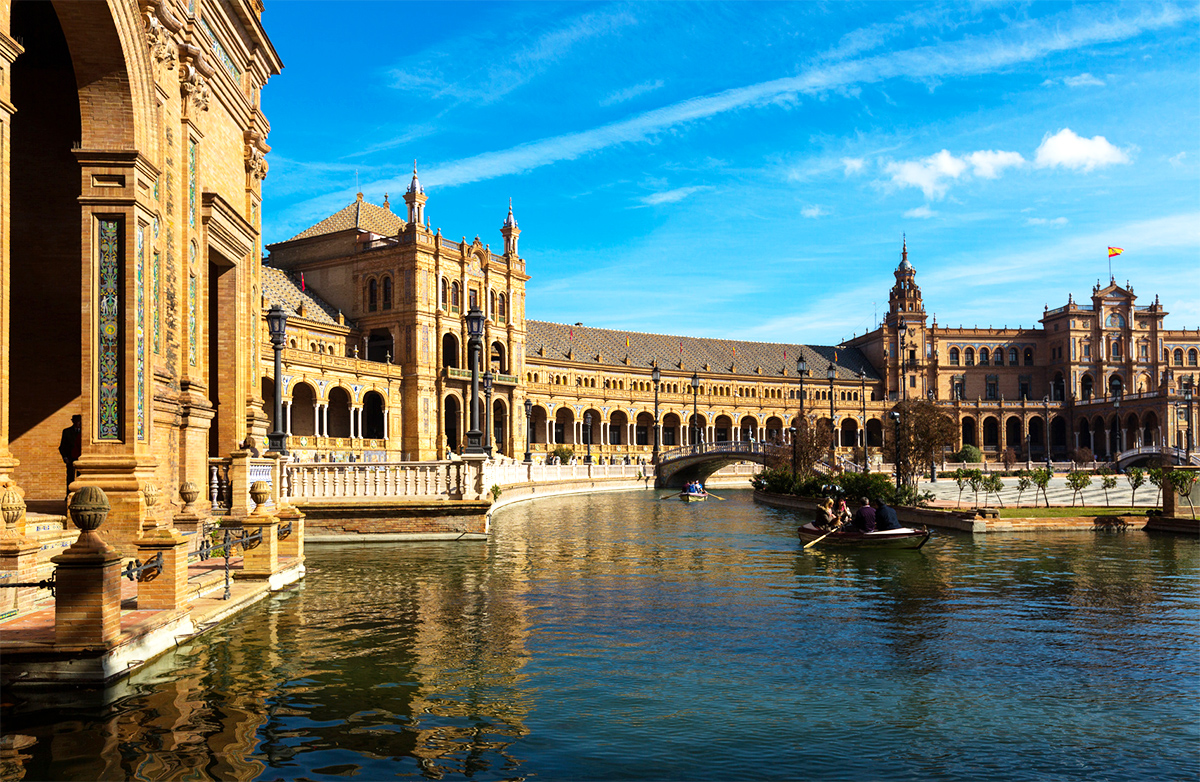
Seville
6. CORDOBA
To get to the next stop, it will take you less than two hours going through the suggestive landscape of Andalusia. The province of Cordoba is distinguished by Sierra Morena in the north and by agricultural areas and farmland with vineyards and olive grove in the south.
Cordoba is the most Arabic city throughout Andalusia. The historic center of this city, named a UNESCO World Heritage Site, contains some hidden treasures to discover.
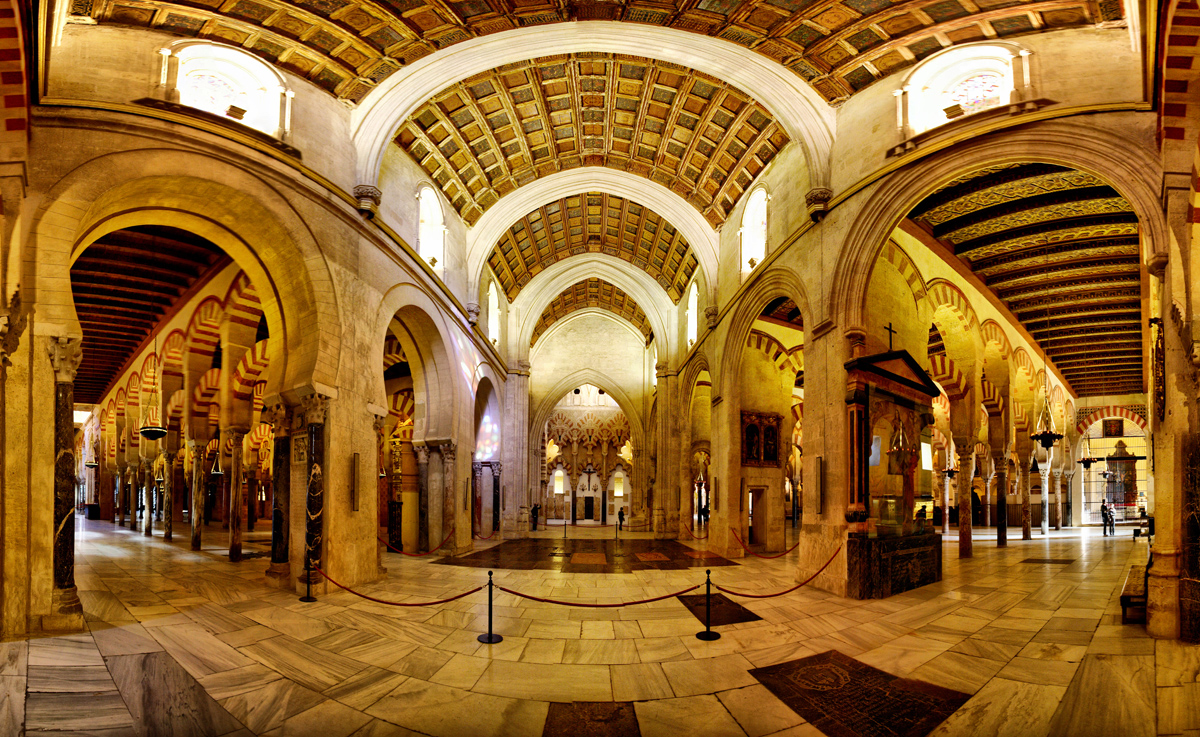
The Mosque of Cordoba
Among the things to see in Cordoba we can't forget the Mosque, one of the most beautiful mosques in Europe, a real symbol of the city, and the palace of Alcazar de los Reyes Cristianos, full of gardens.
But the surprises don't finish here... in Plaza del Potro, in front of the Museum of Fine Arts is the Locanda del Puledro, the same described by Cervantes in his Don Quixote.
And also Plaza de la Corredera, the old Jewish neighborhood also known as la Juderia, the Roman Bridge on the Guadalquivir River and the Sinagogue.
After getting lost among the alleys and squares of Cordoba, like the famous Calleja de las Flores or Plaza de las Tendillas, stop by the Hammam Al Ándalus to have some rest after the long journey with a relaxing bath in one of their hot water tubs.
7. TOLEDO
Let’s set off again to reach Toledo, stop number seven of the journey. The distance to cover now is about 340 km, so our tip is to stop to take a break. After approximately 2 hours, after the Natural Park of Sierra de Cardeña and Montoro, you will be close to Ciudad Real, halfway of the trip.
Toledo is a Medieval city with tiny alleys, full of typical shops selling knives and china products. It is always full of surprises, thanks to its unexpected glimpses and panoramas. The main square, where you will also find the tourist office, is Plaza Zocodover.
Right behind this square is the Museum of Santa Cruz, magnificent Gothic building with many courtyards and paintings by El Greco. The famous artist, whose real name was Domenikos Theotokopoulos, lived in Toledo for over 30 years.
Behind the museum is the imposing fortress of the Alcazar, while another attraction you can’t miss during your visit to Toledo is the Cathedral, one of the biggest Gothic churches in the world.

Toledo
8. MADRID
Madrid is only 70 km away from Toledo: 1 hour and you’ll be in the Capital of Spain! The city that never sleeps.
Madrid, besides being famous for its non-stop movida, its many bars and restaurants, is a city where everyone will find something for themselves. Art and architecture lovers will find their match, as well as those who don’t intend at all to shut themselves in a museum, here they will find what they are looking for.

Madrid
Madrid has some very important museums, first of them el Prado. From Caravaggio to Goya, from Raphael to Velazquez, this museum houses the European history of art of the last five centuries.
The Museum Reina Sofia, on the other hand, houses works of art from the beginning of the 20th century to our day. There’s a lot of room for Spanish painters such as Dalí, Miró and Picasso. It goes without saying that the main attraction for tourists who crowd the museum every day is the Guernica.
Finally, to conclude the museum triangle, we remind you of the Thyssen-Bornemissa Museum, which counts with artworks by Van Eyck, Caravaggio, Van Gogh, Gauguin and Hopper.
Among the most important places to visit are Plaza Mayor, Palacio Real, Park of El Retiro and the Market of San Miguel.
Those wiling to explore the city and getting to know its most transgressive and lively soul, the Chueca neighborhood is absolutely a must.

Entrance to the Prado Museum in Madrid
9. ZARAGOZA
Last stop of this trip, the city of Zaragoza is the fifth largest city of Spain and the capital of the Autonomous region of Aragon.
Located along the bank of the river Ebro, this city is full of fascinating Mudájar-style monuments, reminder of the Arabic influence. Among them, the Palace of Aljafería and the Cathedral are proof of the long Islamic period. There are traces of the Roman period as well, from which the walls of the old town are still preserved.
Among the main attractions of Zaragoza we have to mention the splendid Basilica of Nuestra Señora del Pilar, the Cathedral of San Salvador, the Palace of Aljafería, the Lonja and the new Torre del Agua, built on the occasion of the Expo 2008, thanks to which the city was renovated and it became one of the most popular tourist destinations of Spain.
The most frequented areas are the Central Market and the area of Bolivia la Paz with bars and restaurants. It is, however, in the old town where you will find most of the clubs and pubs to party all night long.
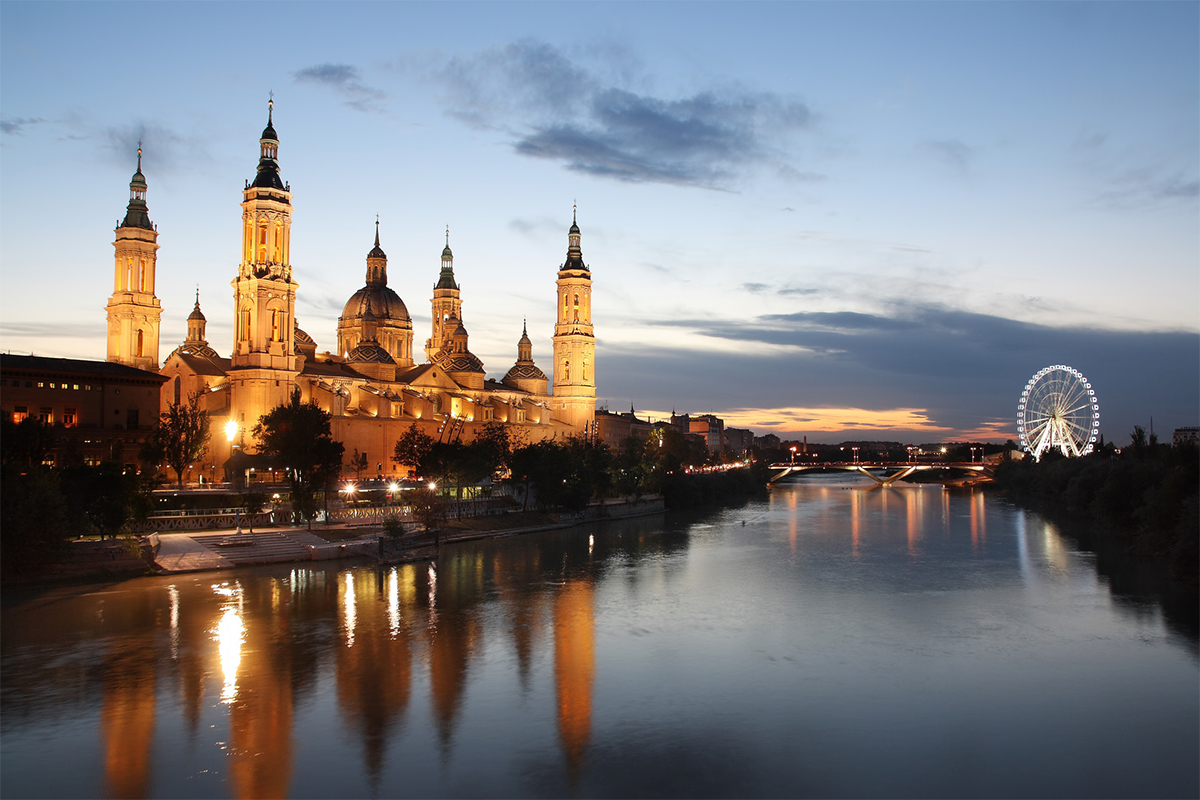
Nuestra Señora del Pilar in Zaragoza
10. BACK TO BARCELONA
After 10 stops and over 2,300 kilometres on the road, here we are at the end of this long and exciting road trip discovering important art cities, monuments, colours and flavours. We are sure you will keep all these in your hearts forever.
Now we only want you to tell us about your trip in first person!
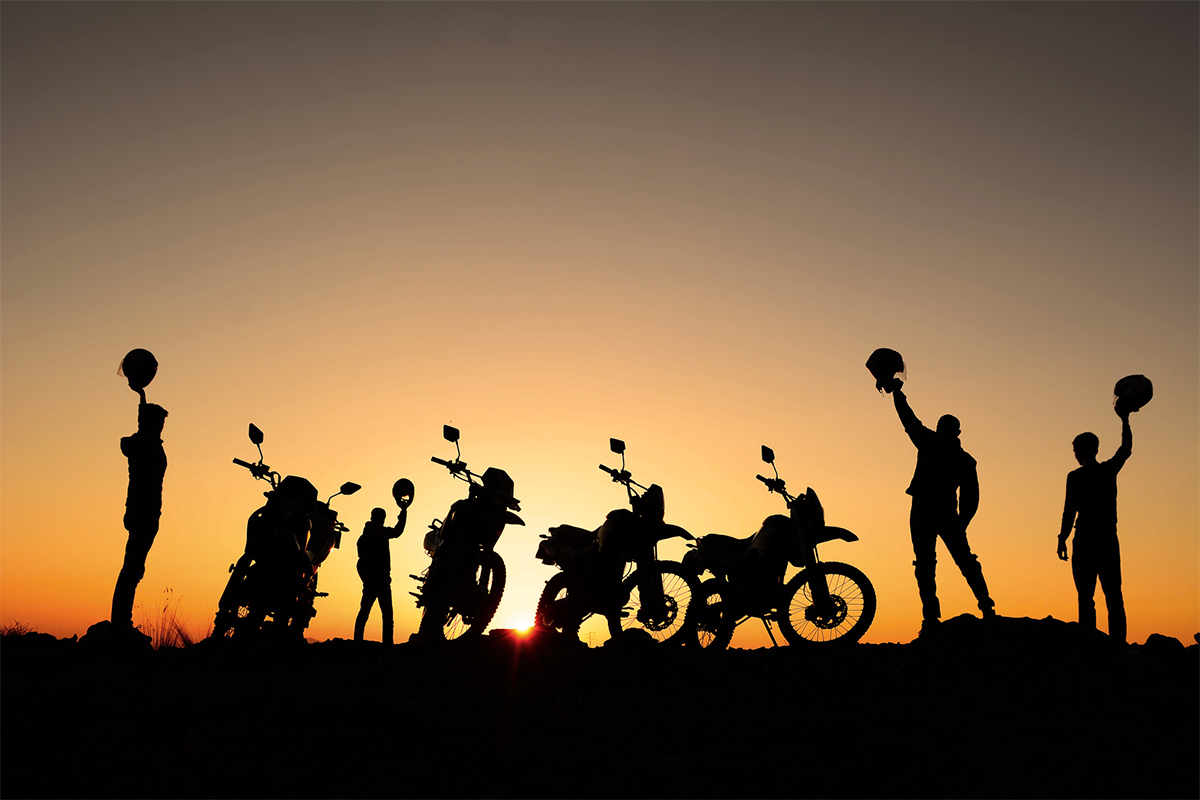
Spain on the Road



 PORT MOBILITY CIVITAVECCHIA
PORT MOBILITY CIVITAVECCHIA








